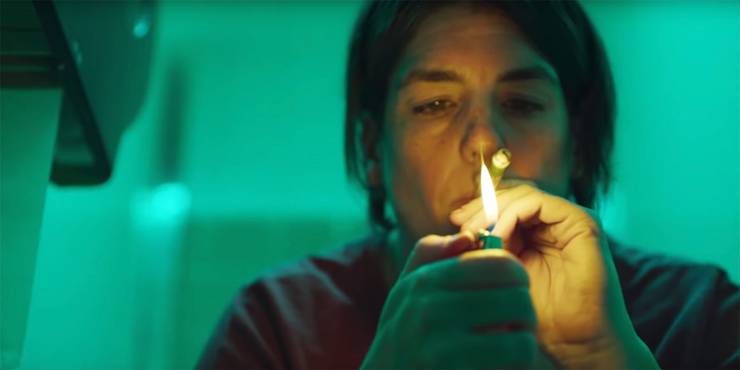- Advertisement -
Docuseries director Erin Lee Carr’s most recent project, titled “How to Fix a Drug Scandal,” draws attention to unethical behavior on multiple fronts, but the primary focus of the series is on a former drug lab technician in Massachusetts by the name of Sonja Farak.
Farak is one of two drug lab technicians in Massachusetts who were caught tampering with evidence that was used to convict thousands of defendants on drug charges. The evidence that they tampered with was used to convict defendants on drug charges. Annie Dookhan, a laboratory technician, was arrested in 2012, several months before the misconduct of Farak was discovered in 2013; it became apparent that she wasn’t even testing the drug evidence; rather, she just marked results as positive in order to impress her coworkers with her speed and efficiency.
- Advertisement -
In 2013, their misconduct of Farak was discovered. In 2012, Annie Dookhan was arrested. After their arrests, the prosecutors at the Massachusetts Attorney General’s office tried to cover up their crimes without addressing how their actions affected the defendants who were convicted based on the results of their drug testing. This occurred after the defendants had already been arrested.
In spite of the fact that Farak asserted that she had in fact examined all of the drug evidence that was presented to her, she did so, in contrast to Dookhan, under extremely dubious conditions. She would perform her duties while under the influence of meth, cocaine, LSD, and crack. Her supply came from her job; she would take drugs from the evidence bags at work, use them, and then replace them with fake drugs. Her supply came from her job.
Who is Farak?
Farak was born in San Diego, California, but within a year of her birth, her family relocated to Newport, Rhode Island. This move was prompted by the fact that Farak’s father served in the Navy and was transferred to the east coast. Her testimony that her childhood was typical and of the middle class was presented throughout the documentary series. Her parents were said to be loving, but they had a very strict upbringing.
You May Also Like This: How Did Blippi Net Worth Exceed Millions? (Latest By 2021)

In his testimony, Farak stated, “I was provided for in every way.” “Even though I was never a victim of abuse, I still ended up in a certain way and I still struggled with issues.”
As a child, there were no indications of future difficulties, at least not ones that could be seen from the outside.
Farak’s sister Amy Farak said her sister excelled at sports. In point of fact, she was the very first female student in the history of Rhode Island’s public school system to participate in high school football. Due to her success, she was featured on the front page of the neighborhood newspaper and received coverage on the television news in her area.
During the segment of the local news that was incorporated into the documentary series, Sonja stated, “I want to be accepted like one of them.” ” Just so you know, there will be no preferential treatment.”
In addition, she excelled in her academic pursuits. In 1996, when Sonja graduated from high school, she was not only awarded a variety of varsity letters for the sports she participated in. Additionally, she was the co-valedictorian of her class.

Amy shared her opinion with the producers of “How to Fix a Drug Scandal,” stating that “If she puts her mind to something, she can do it.”
Sonja was having a hard time keeping it together on the inside. According to Rolling Stone, she struggled to control her mental health issues, particularly her depression, and she attempted suicide while she was still in high school.
Following her graduation from high school, Sonja attended the Worcester Polytechnic Institute in western Massachusetts to pursue a degree in biochemistry. She received her diploma with the highest possible distinction. While she was in school, she made the acquaintance of her life partner, Nikki Lee. She continued to be an avid football fan and had a soft spot for the Patriots.
After receiving her degree from college, Sonja found employment as a chemist at the Hinton State Laboratory building, which is located in Jamaica Plain. After working there for a year, she quickly came to the conclusion that she would not be able to earn sufficient money in the Greater Boston area to be able to purchase a home. She considered moving to the western part of the state because it had lower housing costs and had a lower population density.
After that, she began working in a laboratory located in the Morrill Science Building on the campus of the University of Massachusetts Amherst. She started working there in 2004, and she liked that it was a less stressful environment than her previous job in Hinton had been. Because there were fewer technicians, it was also simpler for her drug use to go unnoticed, which contributed to the situation.
Her addiction
Within a year of starting his new job at the laboratory, Farak started using illegal drugs. The documentary series reveals that in 2009 she admitted to a therapist that she had been dealing with issues related to addiction since the year 2005. She revealed to her therapist that she had been getting all of the drugs she was using from her place of employment.
During her testimony, Farak stated that she initially tried meth in the laboratory because she was “curious.” She admitted that during her time in college she had researched various drugs and mentioned that meth was one of the substances that sounded particularly interesting to try. She tried it while the other people in the laboratory went out to lunch, and she found that it lived up to her expectations.
She claimed that “it had the desired effects on me.” It gave me energy. I felt amazing.”
Her interest in drugs quickly turned into a chronic dependence on the substance. She initially worked while under the influence of a variety of substances, including methamphetamine, liquid amphetamine, LSD, cocaine, and crack.
Carr told phootoscelebrities.com that she “could not imagine being high on liquid methamphetamine and hiding it, day in and day out.” Carr also mentioned that her initial curiosity regarding Farak was the impetus for the production of the documentary series. “The events that transpired in this tale were both heartbreaking and unbelievable.”
Carr, who has been open about her personal struggles with alcohol abuse in the past, stated that it takes “strength” and a “very specific type of person” to be able to conceal such intense substance use for such a long period of time.
In the beginning, Farak restricted her drug use to the workplace; however, her habit eventually became public knowledge. She began bringing drugs into the house and using them first thing in the morning after she got them.
According to defense attorney Luke Ryan, who was interviewed by phootoscelebrities.com, the defendant “suffered from substance misuse disorder and she was in the worst kind of place to try to combat that.” He advocated on behalf of clients whose lives were negatively impacted by the actions of both Farak and Dookhan. “There were points in time when she genuinely attempted to refrain from doing this but she was unable to,”
He believes that she had a chemical dependency on the drugs as well as a psychological dependence on them. He said that he has this feeling.
“These are the kinds of things that lead people, including my clients, to make decisions that have a negative effect not only on themselves but also on other people. He said, “I have sympathy for a human being who is struggling with a very difficult addiction.” “While I certainly think that her longstanding refusal to acknowledge what she was doing violated the rights of lots of people, I have sympathy for a human being who is struggling.”
When Farak was confronted by a state trooper in 2013 after it was discovered that some of her drug samples were missing, she was finally able to put an end to her pattern of improperly handling evidence. Instead of real drugs, we found counterfeit ones. At the time, Farak was in the middle of her thirties.
Where is she now?
In 2014, Farak entered a guilty plea to two counts of cocaine possession as well as four counts of tampering with evidence, four counts of stealing controlled substances from authorized dispensaries, and four counts of stealing controlled substances from authorized dispensaries. The same year, she was ordered to serve 18 months in prison, followed by five years of probation, and then she was required to perform 500 hours of community service. According to a report from Mass Live in 2014, she sobbed as she was being sentenced.
2015 marked the year of her freedom. In 2018, Farak was successful in overturning every single one of the more than 10,000 criminal convictions that he had worked on.
Despite the fact that what she did was wrong, many people have shown compassion for her predicament.
In the documentary series, Ryan is heard saying, “I regret having to advocate against her because I believe it must be very painful to be Sonja.” “What I mean is that she could have been one of my customers.”
According to the documentary series, Farak has maintained his sobriety.
Carr, who also directed the true-crime documentaries “I Love You, Now Die” and “Mommy Dead and Dearest,” spoke to Women’s Health and said, “She isn’t on drugs anymore, and I think that is incredible.”
The director revealed in an interview with phootoscelebrities.com that she devoted a lot of her time to contemplating Farak and attempting to humanize her character.
It was said by her that “I think she’s a good person.” “I think I make a strong case and advocate that humans are fallible and that she needs to be given a second chance, but that’s an unpopular opinion, and I can’t control how the public reacts to it,” the speaker said. “I think I advocate that humans are fallible and that she needs to be given a second chance.”
Carr has expressed her shock at the number of angry responses to Farak that have been posted on Twitter. In addition, she stated that she has been struggling with the question of how the documentary series may have influenced Farak’s life.
She said, “I can only imagine how painful it must have been for her to go through all of this.” “Yes, it is so exciting to put a series out, and I think the series is well-reported and researched, but it’s something that happened while she was in the midst of her addiction, and she was extremely embarrassed about it. “Yes, it is so exciting to put a series out. It’s almost as if somebody would take the most embarrassing part of my life and show it to millions of people.
Some aspects of the narrative run the risk of being buried under an onslaught of information if it is told in a format that is more drawn out and episodic. And yet, inexplicably, some information is repeated such a large number of times that it begins to give the impression that a feature-length film was artificially stretched out to fill four episodes. (Yes, we are aware that this was a very serious issue; there is no need for a large number of people to inform us of this using a variety of sentence structures.)
In addition, the decision to center the series on Farak’s case rather than Dookhan’s feels like a poor choice from a structural standpoint. There is no doubt that Farak’s addiction is a significant problem, as is her attempt to conceal evidence of its years-long duration as well as the effects it has had on her work. However, despite the fact that Dookhan knowingly fabricated her work for the purpose of financial gain and lied about her education and life, she is given second billing in the series.
This is an extremely problematic choice. It would have been possible to give the episodes more narrative drive by reorienting the series so that the two stories were more evenly balanced, or by beginning with Dookhan’s story.
Carr is still pondering some of these questions after the completion of the project.
“Am I someone who has robbed her of her personhood? Carr stated, “I’ve been struggling with that, and I don’t know what it’s been like for her.” “It’s very uncomfortable, and I don’t know what it’s been like for her.”
Carr mentioned that Farak is a private person in his conversation. She reached out to her family to let them know that the documentary series was going to be released, but she hasn’t spoken to Farak, and she doesn’t know a lot about what’s going on in her life right now.
The documentary series did mention that Farak is still a die-hard New England Patriots supporter.
FAQs
What is Sonja Faraak currently doing?
After being freed from prison in 2015, Farak has maintained a low profile. The chemist was seen in 2019 attending a civil case at the federal court in Springfield, Massachusetts.
How was Sonja Farak apprehended?
MA Drug Lab Scandals | Sonja Farak Sonja Farak was detained in January 2013 after discovering samples were missing from the evidence. Sonja Farak had been a chemist at the Amherst drug lab since 2004.
Sonja Farak worked where?
From 2002 to 2004, Farak worked at Hinton before transferring to the state drug lab in Amherst. A Superior Court judge determined in 2017 that she was abusing drugs to the fullest extent while employed by Hinton.
- Advertisement -


